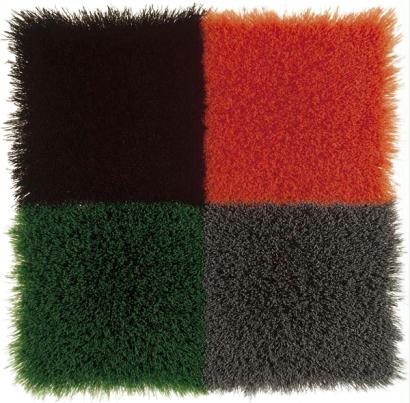Ottmar Hörl
Besenstücke, 1998
[Broom Pieces]
Brooms, aluminium
25 x 25 x 9 cm
© Artist
Photo: Gerhard Sauer
Ottmar Hörl: “My pieces always have a more or less political intent. Which is to say, they tend to make statements about society. Art is not about dividing the world into good and bad, but about the fact that art as one aspect of society is informed by the will to unsettle and to vault over or extend entrenched conventions.” (1999)
Ottmar Hörl is a conceptual artist. In keeping with his extended concept of “sculpture as an organizational principle”, his manifold forms of artistic expression with their strong orientation to everyday culture are to be grasped as offensive strategic interventions in social contexts. His overt goal is to disrupt and unsettle, and simultaneously broaden entrenched conventions and doctrines. Hörl already denies all claim to creative originality through the choice of material for his actions, multiples and objects: trivial, standardized utility objects and industrially manufactured resources. In his wall and floor pieces the square, which he sees as the primal form of traditional painting, gives rise time and again to ingenious transformations and reformulations. The squares – covered with artificial lawns, silk ivy or even polyester sponges that make up the monochrome, space-forming formats – ironically seize on the conceptual proclamations of eminence that inform non-representational painting, and develop them in their own specific ways.
The proximity to painting is already indicated in the title of the work, Besenstücke [Broom Pieces]. And it is reminiscent of the familiar terminology of art history, as in the designation “Blumenstück” or “flower piece”. The difference is that here we are genuinely confronted with pieces of brooms which, with their loss of functional identity, re-question the picture as picture and elicit unsuspected aesthetic qualities from the material. Consequently the four-colour montage with its four squares of bristles looks quite classic and does not disavow its “concrete” exemplars. The associated structural elements such as colour relations, the application of the paint, and colour space are materialized, paraphrased and thought out anew in an astute and subversive manner. The realization that art always emerges from art, that pictures arise from pictures – regardless of in which material – is brought home by this meeting of high art and everyday object a manifest intention. Freed by quotations and laconic irony from the seriousness of art contemplation, yet with a backdrop of by all means reflected responses to past avant-gardes, Hörl opens up a creative potential for communication that in its special way prompts new and altered ways of seeing and thinking. (Rita Täuber)
Ottmar Hörl
1950 born in Nauheim (DE)
Lives and works in Nuremberg and Wertheim


